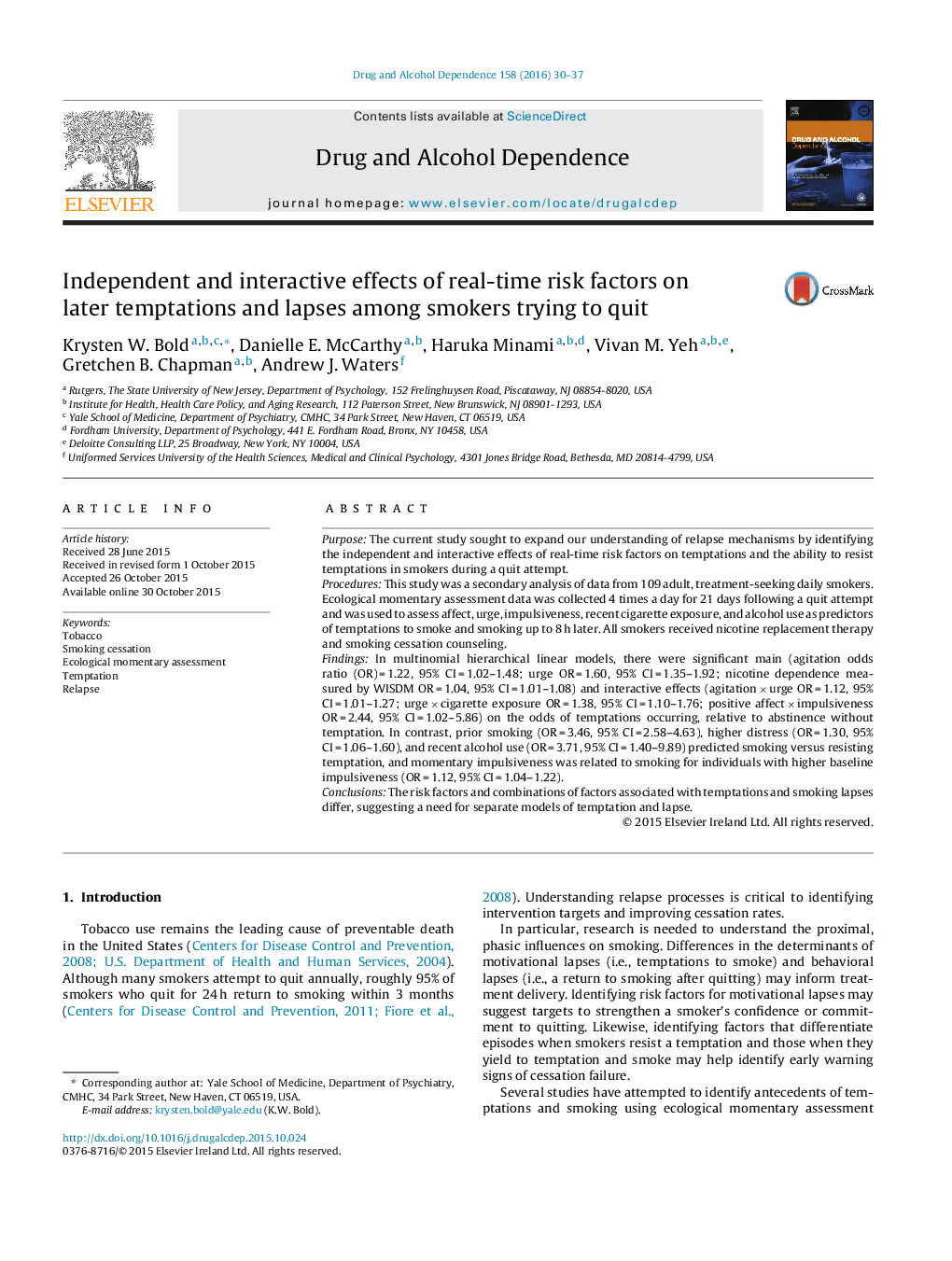| کد مقاله | کد نشریه | سال انتشار | مقاله انگلیسی | نسخه تمام متن |
|---|---|---|---|---|
| 1069736 | 1486133 | 2016 | 8 صفحه PDF | دانلود رایگان |
• Modeled within-person risk factors for temptations and lapses in adult smokers.
• Used time-lagged hierarchical linear modeling to identify risk prior to outcome.
• Independent and interactive effects of urge, affect, impulsiveness, and context.
• Antecedents of temptations and lapses differ, suggesting separate interventions.
PurposeThe current study sought to expand our understanding of relapse mechanisms by identifying the independent and interactive effects of real-time risk factors on temptations and the ability to resist temptations in smokers during a quit attempt.ProceduresThis study was a secondary analysis of data from 109 adult, treatment-seeking daily smokers. Ecological momentary assessment data was collected 4 times a day for 21 days following a quit attempt and was used to assess affect, urge, impulsiveness, recent cigarette exposure, and alcohol use as predictors of temptations to smoke and smoking up to 8 h later. All smokers received nicotine replacement therapy and smoking cessation counseling.FindingsIn multinomial hierarchical linear models, there were significant main (agitation odds ratio (OR) = 1.22, 95% CI = 1.02–1.48; urge OR = 1.60, 95% CI = 1.35–1.92; nicotine dependence measured by WISDM OR = 1.04, 95% CI = 1.01–1.08) and interactive effects (agitation × urge OR = 1.12, 95% CI = 1.01–1.27; urge × cigarette exposure OR = 1.38, 95% CI = 1.10–1.76; positive affect × impulsiveness OR = 2.44, 95% CI = 1.02–5.86) on the odds of temptations occurring, relative to abstinence without temptation. In contrast, prior smoking (OR = 3.46, 95% CI = 2.58–4.63), higher distress (OR = 1.30, 95% CI = 1.06–1.60), and recent alcohol use (OR = 3.71, 95% CI = 1.40–9.89) predicted smoking versus resisting temptation, and momentary impulsiveness was related to smoking for individuals with higher baseline impulsiveness (OR = 1.12, 95% CI = 1.04–1.22).ConclusionsThe risk factors and combinations of factors associated with temptations and smoking lapses differ, suggesting a need for separate models of temptation and lapse.
Journal: Drug and Alcohol Dependence - Volume 158, 1 January 2016, Pages 30–37
